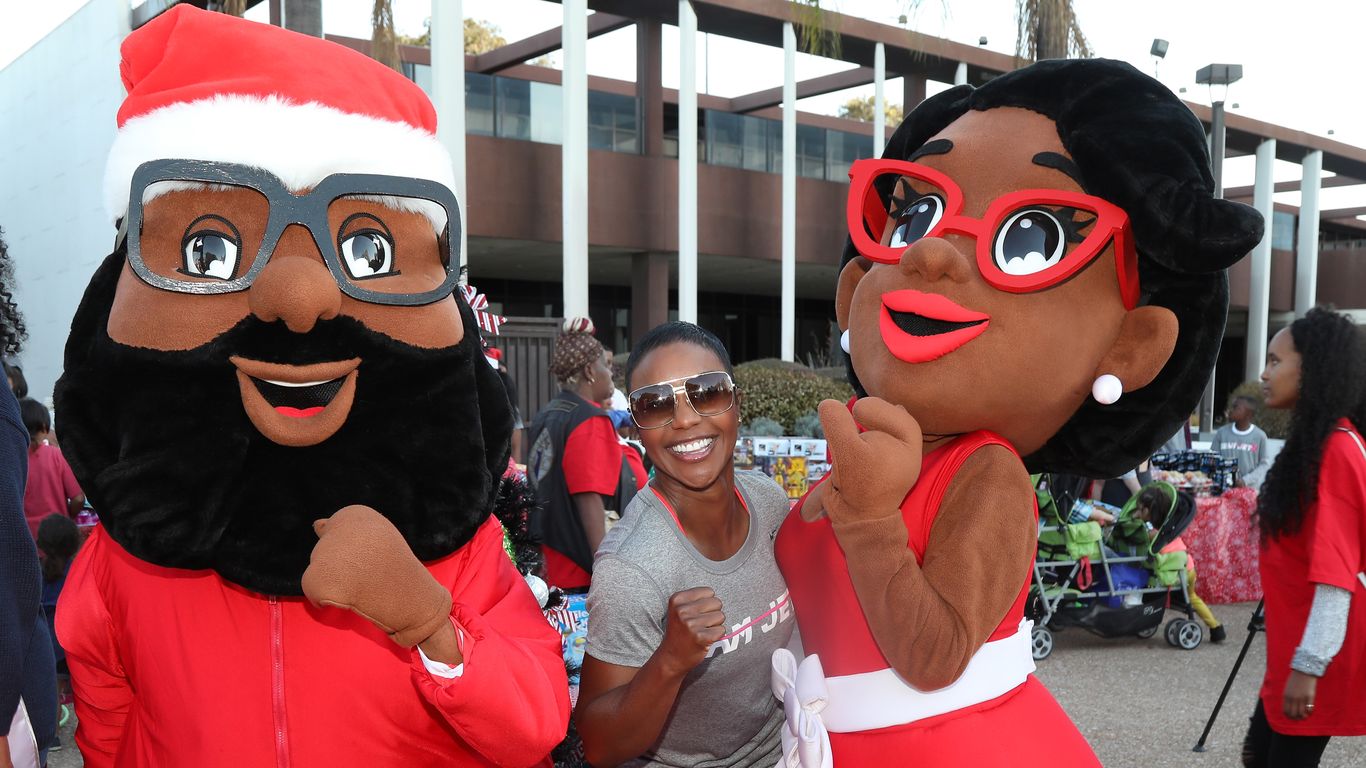Black Santa, Native American Nativity scenes, and diverse-cast Christmas movies are becoming regular sights around the holidays as U.S. demographics transform.
Why it matters: Advertisers, shopping malls, and movie studios have finally embraced diverse holiday imagery during a national reckoning on race and as communities of color continue to claim Christmas as their own celebration.
- Public events involving Black Santa have gone from a handful in 2016 to more than 200 this year, even during the pandemic, said Vivian Walker, founder of the Black Santa Directory.
- More holiday ads in the U.S. and U.K. are featuring diverse families.
- Artists are selling Nativity scenes with the Holy Family as Latino immigrants or as Jemez Pueblo members in front of a New Mexico adobe home.
Driving the news: A Black family in North Little Rock, Ark., received a racist letter last month in response to putting a Black Santa on their front lawn. White neighbors responded by putting Black Santa decorations on their own lawns in solidarity.
- A United Methodist Church in Claremont, Calif., recently built a Nativity scene with a Black Lives Matter theme. Last year, the same church had a Nativity scene with Baby Jesus as a caged Latino migrant child.
- This year’s Lifetime TV movie, “A Sugar & Spice Holiday,” is one of the first major Christmas flicks with a mostly Asian ensemble. Netflix’s new holiday hit “Jingle Jangle” centers around an all-Black cast in the Victorian period.
What they’re saying: “Black Santa builds self-esteem for Black children but also speaks to parents of children of different races,” said Dr. Jihan Woods, a doctor in Dallas and founder of the Find Black Santa app.
- Woods said the Black Lives Matter protests this summer made people of color more comfortable displaying diverse holiday icons that reflect their experiences.
- “If this is us, then it has to look like us,” said Alexandro Jose Gradilla, a Chicana and Chicano Studies professor at California State University, Fullerton.
Between the lines: Scholars say the depiction of Santa Claus as a white man originated because he was a European import, a blend of the Dutch Sinterklaas and British folklore character Father Christmas.
- Images of a light-skinned Jesus were made popular by Renaissance European artists, later brought over to the Americas.
Yes, but: Santa Claus is also linked to Saint Nicholas, a 4th-century Greek bishop in modern-day Turkey, who was likely a dark-skinned man.
- The historical Jesus was a Palestinian Jewish man. Scholars say Jesus and his mother, Mary, likely had dark skin and curly, dark hair.
- “It’s interesting that, as people of color are reclaiming their figures to be reflective of themselves, these figures are returning to what they actually looked like,” Laura Elena Belmonte, a Univerity of New Mexico Chicana and Chicano Studies professor who studies religion.
The bottom ilne: Walker said images like Black Santa and diverse Baby Jesus are mainly for the adults. Kids will jump into the spirit no matter how figures appear.
- “Children see a Black Santa and they just see Santa. They will run up to him, sit on his lap, and then it’s down to business.”
